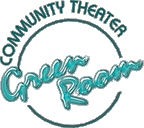|
||||||||||||||||||||||||||||||||||
Step 1: Read the Play
|
As a set designer, you need to read the play in a different way from the way you would read it if you were auditioning for a part or getting ready to direct the show. You'll be paying a lot of attention to stage directions, for one thing. Here are the things to look out for as you read: Number of different settings: Is this a unit set (one set where all the action takes place)? Are there many scenes that take place in different locations? Is there a main locale interspersed with smaller scenes that don't need much space? Make note of the number of locales you're going to need to create and how much space each of them will need. Entrances and exits: How many doors will there need to be? Where do they lead - outdoors, into a hallway, another part of the house? Are there windows that characters have to use, either to look out of or to climb through? Trap doors or stairs? A bookcase that swings out to reveal a hidden room? Make note of all the types of entrances that the actors will require. Seating space: How much seating space will be required? If it's a large-cast murder mystery, for example, you'll probably need to have a lot of places for actors to sit while the detective makes his big explanatory speech and finally unmasks the killer (although some actors will invariably remain standing). If there are never more than three characters on stage at any one time, you don't need too many places to park actors. Set pieces: Does there need to be a steamer trunk large enough for an actor to hide in? Does someone use a phone? Climb a tree? Use a fireplace to burn an incriminating letter? Make note of essential items of furniture or set pieces, and pay special attention to those that may be unusual or difficult, or need to be in a logical location in relation to the rest of the set. Time period: When does the action take place? Whether the play is contemporary or associated with a certain era, your design and décor will need to reflect the appropriate time period. Atmosphere: What feeling do you get from the play as you read it? Is it a comedy, drama or mystery? Is a given locale seedy, middle class, upscale? Is the show non-conventional, avant-garde, intended to keep the audience off-balance in some way? You'll need to use those feelings in your design and décor. Keep in mind that, as soon as the curtain opens (if there is one), the set should tell the audience something about the social circumstances of the characters, and convey a mood for what the audience is about to see. In this respect, the set is as much an actor in the piece as any of the humans that will grace it. NEXT: Step
2: Talk to People |
|
The
Community Theater Green Room www.communitytheater.org © 1999 - 2007 Chris & Mike Polo All rights reserved. |


